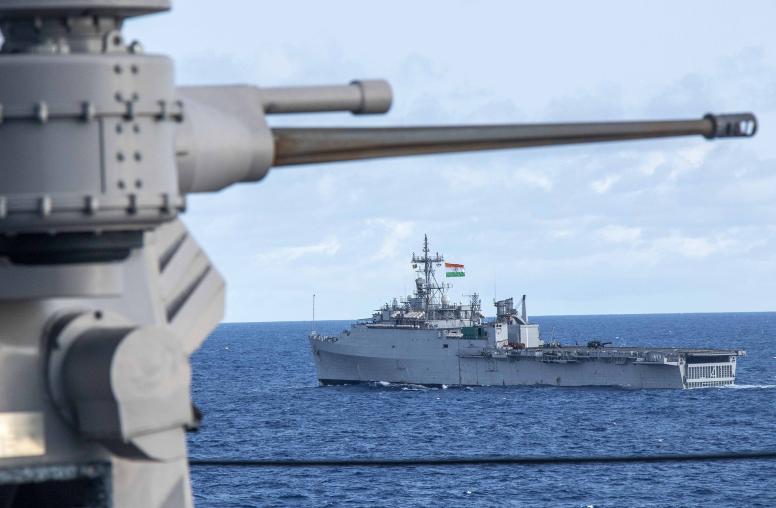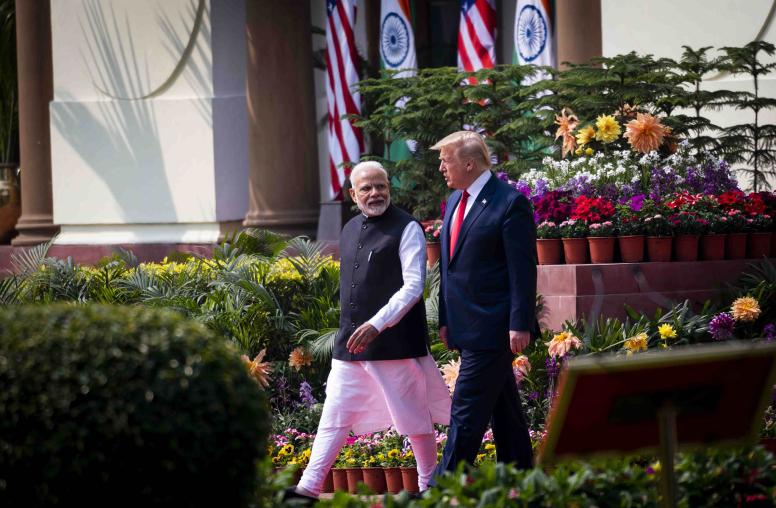In Northeast India, Manipur’s Violence Echoes Sudan’s Darfur
Disparate wars are fueled partly by leeway for hate speech and ill-governed militias.
Rising violence this year threatens to deepen instability in India’s far northeastern region. Ominously, the bloodshed centered in India’s state of Manipur includes elements that were visible in early stages of the 20-year-old conflict in Sudan’s Darfur region. Darfur’s violence has killed or displaced millions of people and helped lead to this year’s civil war across Sudan. Tragically, both countries have seen these disparate conflicts intensify through widened opportunities for ill-governed ethnic militias and for hate speech. These evolutions have hardened local conflicts over land or water into more extreme, venomous warfare between ethnic or religious communities. Darfur’s example underscores the urgent need for responses in Manipur.

Even geographically remote conflicts pose risks to international stability and U.S. security. They escalate the humanitarian costs and annual, multitrillion-dollar economic losses from global violence, including the highest-ever level of human displacement — now more than 108 million people worldwide, from Asia and Africa to Europe and the Americas. Like wars from Colombia to Libya to Burma to Darfur, the upheaval in Manipur has opened growth opportunities for transnational organized crime.
Turmoil in northeast India risks spreading across borders, for the region is surrounded by Burma, Bangladesh, Nepal, Bhutan and China. One concern for India is that heightened violence in Manipur or neighboring states could overstretch Indian forces that currently focus on securing the disputed India-China border in the northeast.
Three drivers of violence are evident in both Manipur and Darfur, Sudan’s western region. In both regions, where access to land has been a source of conflict between ethnic communities, government authorities sought changes to the local patterns by which the communities had governed land and managed those conflicts. Secondly, both conflicts escalated after official actions led to increased influence by ill-governed ethnic militias. Third, authorities either supported (in Sudan) or tolerated (in India) increases in hate speech and disinformation against ethnic communities. To be sure, the presence of these drivers of violence in the two conflicts does not imply that official actions by Sudanese and Indian authorities have been equivalent. As described below, they are not. Yet it is worth noting the parallels in these disparate conflicts to see more clearly the steps by which Indian and international communities can prevent further escalation in Manipur’s violence.
Violence in Northeast India
Manipur is among eight northeastern states that have been roiled by insurgencies and other conflicts since the transition from British colonial rule attached them to India in the 1940s. More than 40 percent of the region’s people live below India’s poverty line. Governance is highly securitized, with a heavy presence of army troops who wield greater powers over the population than in most of India. The northeast is also one of numerous biodiversity hotspots around the world where violent conflict intersects with environmental destruction and indigenous peoples’ homelands.
Manipur, a state of forested mountains slightly smaller than New Jersey or Djibouti, has suffered communal or pro-independence conflicts for decades among its 39 ethnic groups. Violence escalated in May between ethnic Meiteis, a slight majority of Manipur’s 3.3 million people, and ethnic Kukis, roughly a quarter of the population. Meiteis and some Kukis live in Manipur’s central valley, while most Kukis live in Manipur’s hills — a geographic segregation that dates to British colonial rule. The Kuki population has swollen, particularly since 2021, with refugees from the war in Burma.
The fighting erupted in May after Manipur authorities either made or sought changes in rival groups’ access to land. The state government evicted Kukis and others who it said had encroached on state-owned lands. Then, a court ordered the state to consider Meitei groups’ demands to be given affirmative action (“scheduled tribe”) benefits to Meiteis, which would let them buy land and settle in hill areas. Kukis said that step would further weaken their own economic and political status as a minority group. Nearly five months of violence has burned thousands of homes and uprooted more than 70,000 residents. The conflict risks spreading to include Kuki and Meitei communities in neighboring Indian states, Burma and Bangladesh.
Since the 1990s, Indian security forces and northeast India’s warring ethnic militias have committed massive human rights abuses and have escaped accountability. Ethnic communities in the northeast accuse different governmental security forces of collusion with, or support for, opposing ethnic militant groups. This year, those accusations escalated. A Kuki-aligned group, the Indigenous Tribal Leaders' Forum, accuses Manipur state police of protecting only Meiteis. A Meitei group, the Coordinating Committee on Manipur Integrity, accuses an Indian army-controlled force, the paramilitary Assam Rifles, of supporting Kuki militant groups.
Kuki ethnic militias have established virtual fiefdoms in mountainous and border areas, extracting taxes from residents and income from the cultivation of poppies and trafficking in illegal drugs. The militias’ control in those remote areas has increased over 15 years since the central government and Manipur authorities signed an effective truce with them. India’s army has built what is effectively an armed border of fences and checkpoints between Manipur’s Meitei-dominated main valley, which remains under state governance, and the mainly Kuki-populated areas in the mountains.
Darfur’s Conflict: Parallels with Manipur
Darfur, a region of savannahs and desert, has long seen conflicts among nomadic, mainly Arab herders and non-Arab farming communities. Until the 1990s, traditional practices settled such disputes through tribal conferences and mediation. But then Sudan’s central government, dominated by ethnic Arab military officers, replaced the traditional system of land governance by handing control over fertile lands, around Jebel Marra, to Arab tribes. In response, non-Arab ethnic groups, especially the Fur, Masalit and Zagawa, rebelled.
Sudan’s military was stretched thin; it already was fighting a civil war with what would become South Sudan. Unable to defeat the Darfur rebels, the government turned to an Arab ethnic militia, the Janjaweed, to conduct what scholar Alex de Waal has called “counterinsurgency on the cheap.” This outsourcing of security to an ill-governed force triggered a bloodbath that killed an estimated 200,000 civilians and uprooted 2 million within two years. The International Criminal Court indicted Sudan’s ruler, General Omar Bashir, and others for genocide.
In Darfur, scholars years ago documented Sudanese government forces’ participation in racialized hate speech and sexual assault against the non-Arab ethnic population. Last month, 19 United Nations experts on conflicts, human rights and law lamented an “apparent slow and inadequate response by the Government of India, including law enforcement, to stem physical and sexual violence and hate speech in Manipur.” The U.N. experts welcomed actions by Indian human rights defenders and India’s Supreme Court to promote accountability such crimes.
In both Darfur and Manipur, official actions changed or threatened existing patterns of people’s access to land, strengthened ill-governed militias and promoted or tolerated hate speech. Together, these evolutions transformed relatively ephemeral conflicts over resources, chiefly land and water, into visceral enmities between ethnic or religious identities. In these conflicts as in others, that change has bred extremisms, dehumanized opponents and impeded peacemaking.
Violence Widened — and Worsened
Darfur’s conflict helped create conditions for the new civil war in Sudan. Over the years, Janjaweed militias forced themselves into power in Sudan’s capital, winning new status from Bashir as the Rapid Support Forces (RSF), a rival to the army. That rivalry exploded into nationwide warfare on April 15. Overall, Sudan’s violence has uprooted more than 8 million of the country’s 45 million people and left nearly 25 million needing humanitarian assistance. Experts convened by USIP warn that Sudan’s violence could spread further through the Red Sea region.
In any armed conflict, ill-governed forces — such as Darfur’s Janjaweed-turned-RSF or northeast India’s ethnic militias — amplify the risks of atrocities and corrupt moneymaking that extend the violence and obstruct peace efforts. In Sudan’s renewed war, journalists and human rights investigators have documented the most severe atrocities in Darfur: villages burned, summary executions, including of children, and mass burials of civilians. Likewise in Manipur, fighters and civilian mobs have burned homes and crops, killed civilian noncombatants and committed rapes and other sexual crimes against women and girls, human rights monitors report. “Hateful and inflammatory speech” is fueling those crimes, the 19 U.N. human rights rapporteurs and other experts wrote last month.
The empowerment of ill-governed forces, including militias, adds fuel for violence — in Sudan, northeast India and other conflicts — when those forces begin illegally trafficking virtually any commodity that can be smuggled for profit: heroin, methamphetamines, fentanyl or other drugs; weapons; enslaved people; or diamonds, gold, timber or other resources. Manipur’s conflict expands the patchwork of violent, ill-governed territories — in Laos, Thailand, Burma and now northeast India — that form one of the world’s busiest regions for trafficking of heroin and synthetic drugs.
Building Better Responses
Indian and international communities should sharpen their focus on the still too-obscured violence in Manipur and northeast India before it can spread as it did in Sudan. Vital steps are these:
- All sides must heighten attention and resources to our responsibility to prevent atrocities already underway and to address unmet basic needs of the conflict’s survivors.
- India must prioritize, and the international community must support, a broad peace process for Manipur and northeast India. Vital elements include government-sponsored peace talks that explicitly include women and indigenous representatives from the region, who have long advanced movements for social change. A truth and reconciliation commission and an eventual tribunal to prosecute war-related crimes will be necessary for long-term justice, peace and healing.
- India and international governments should work with Bangladesh — and, when Myanmar’s domestic evolution permits, with Burmese authorities and communities — to resolve problems in those countries that are closely tied to those of northeast India. That engagement should include governments in South Asia and the Association of Southeast Asian Nations.
Establishing peace in Manipur is essential to peace and stability not only for India but also for nearby regions of India’s neighbors.



